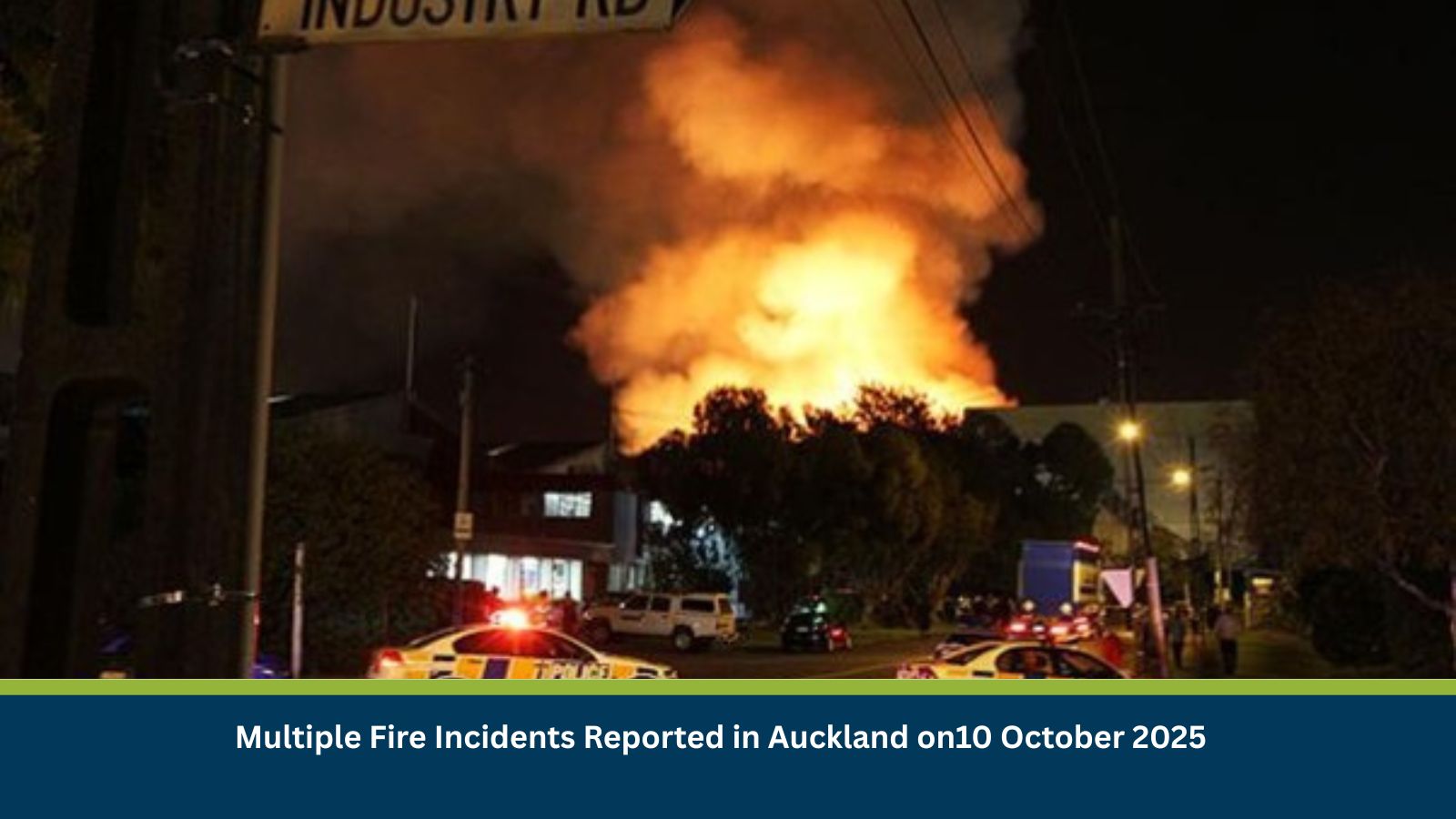What is Risk Analysis in the Context of Critical Infrastructure Events
Critical infrastructure risk analysis focuses on assessing threats that disrupt essential urban systems such as utilities, emergency services, or transportation. In Auckland, recurring fire incidents have historically strained response resources and disrupted neighbourhoods. These incidents highlight the importance of rapid containment, effective public safety communication, and resilience planning, especially when multiple fires occur simultaneously, amplifying response pressure across the city.
Executive Summary
- Date of Incident: 10 October 2025
- Location: Auckland, New Zealand
- Risk Category: Critical Infrastructure
- Severity Score: 3/5
- Confidence Level: 90%
Multiple fires were reported in Auckland on Friday, 10 October, including a major house fire on Onewa Road in Northcote. The clustering of incidents marks a moderate but heightened risk environment. Historical data from similar multi-incident days shows that while most fires are contained within 24 hours, cumulative strain on fire and emergency services can extend operational disruptions for 48–72 hours. Our assessment classifies this as a moderate-severity event, with secondary risks including utility outages, air quality decline, and temporary business interruptions.
Current Updates
On Friday, 10 October, Auckland experienced multiple fire incidents. One prominent event involved a house fire on Onewa Road in Northcote. Emergency services responded to these incidents across the city, working to contain the blazes and ensure public safety. Further details regarding the cause and full extent of damages for all reported fires are pending ongoing investigations.
Known Hotspots and Sensitive Areas
The Northcote (Onewa Road) incident remains the focal point. Other historically sensitive areas prone to similar events include Glen Innes, Onehunga, Mangere, and Auckland CBD, where dense residential and commercial zones amplify fire spread and emergency access challenges. Key assets such as apartment complexes, schools, and small industrial buildings are particularly vulnerable during multi-fire events due to shared infrastructure and limited access roads.
Impact on Transportation and Services
Localized road closures are expected around affected areas, notably Onewa Road, to facilitate emergency access. Smoke plumes may temporarily reduce visibility on nearby routes, including the Northern Motorway. Commuters should anticipate short-term diversions, while public transport may experience rerouting in affected zones. Utilities such as electricity and water could be temporarily suspended in fire zones for safety, affecting nearby residents and small businesses.
Recommended Actions
- Emergency Response Activation: Convene an internal Emergency Response Team (ERT) to assess staff safety, facility accessibility, and local utility status across Auckland.
- People Safety Measures: Account for all employees and issue guidance on air quality precautions and safe commuting routes. Implement remote work where practical.
- Asset & Business Continuity Protection: Secure company sites near fire zones; verify backups and data recovery systems. Restrict access to affected premises.
- Stakeholder Communication: Update clients and partners on potential operational delays or service rerouting; maintain transparent communication through official channels.
- Review Fire Preparedness Protocols: Conduct refresher fire safety training and verify compliance with New Zealand’s Fire and Emergency standards. Reassess emergency equipment readiness.
Multidimensional Impact
The simultaneous fires have stretched emergency response resources, potentially delaying ambulance and police availability for unrelated incidents such as road crashes. Air quality deterioration could also affect outdoor events like the BNZ Auckland Diwali Festival (11–12 October). Prolonged recovery or investigation efforts may further pressure public health and safety systems, particularly in densely populated suburbs. These overlapping disruptions underline the cascading nature of infrastructure-related risks in metropolitan environments.
Emergency Contacts
- Police (Emergency): 111 | Non-Emergency: 105
- Fire and Emergency NZ: 111
- Ambulance/Healthline: 111 / health.govt.nz
- Auckland Council: 09 301 0101
- Official Channels:
Final Thoughts
Multiple fires across Auckland present a contained but resource-intensive disruption with moderate operational impacts. Key watchpoints include deteriorating air quality, extended emergency response times, and potential utility outages in high-density urban areas. Organizations should prioritize personnel safety verification, ensure business continuity measures are active, and implement air quality management protocols. Leveraging real-time intelligence and municipal updates will be essential for maintaining situational awareness and supporting effective continuity planning. Stay ahead of operational risks with real-time alerts, scenario modeling, and expert advisories with datasurfr’s Predict. Start your 14-day free trial of Datasurfr’s Risk Intelligence Platform today.






